At a glance
This issue covers back-to-school season, publication highlights, mpox microsite, AtlasPlus updates, new report on hepatitis C, STI federal implementation plan 2021-2025, TB skin test infographic, and more.
Stay connected
Get Connections in your email
From the director

This back-to-school season is an important time of year for parents and caregivers of students. Helping others build strong bonds and connecting to youth to help protect their mental health is a priority. Although there are concerning trends about the mental health of U.S. high school students, the good news is that teens are resilient, and we know some of what works to support their mental health including feeling connected to school and family.
Check out my recent "X" about helping my own child during this back to school season.
Follow me on X
Publication highlights
Kota KK, Hong J, Zelaya C, Riser AP, Rodriguez A, Weller DL, Spicknall IH, Kriss JL, Lee F, Boersma P, Hurley E, Hicks P, Wilkins C, Chesson H, Concepcion-Acevedo J, Ellington S, Belay E, Mermin J. Racial and ethnic disparities in mpox cases and vaccination among adult males—United States, May–December 2022. MMWR Morb Mortal Wkly Rep 2023;72(15):398–403. There were notable disparities in mpox incidence, with higher rates among Black and Hispanic males than White males. While vaccination rates were higher among Black and Hispanic males than White males, they were not high enough to offset the disproportionate incidence.
Wilkins NJ, Krause KH, Verlenden JV, Szucs LE, Ussery EN, Allen CT, Stinson J, Michael SL, Ethier KA. School connectedness and risk behaviors and experiences among high school students—Youth Risk Behavior Survey, United States, 2021. MMWR Suppl 2023;72(Suppl-1):13–21. During 2021, 61.5% of US high school students reported feeling connected to others at school. School connectedness was associated with a lower prevalence of all health risk behaviors and experiences; associations varied across racial and ethnic groups and sexual identities.
Raiford JL, Yuan X, Carree T, Beer L. Understanding disparities in antiretroviral therapy adherence and sustained viral suppression among Black, Hispanic/Latina, and White women in the United States—Medical Monitoring Project, United States, 2015–2019. J Acquir Immune Defic Syndr 2023. Epub ahead of print. Data for Black, Hispanic/Latina, and White women with HIV were analyzed. Racial/ethnic disparities in ART adherence and sustained viral suppression were reduced after accounting for social determinants of health. Interventions are needed improve health equity for women with HIV.
You S, Yaesoubi R, Lee K, Li Y, Eppink ST, Hsu KK, Chesson HW, Gift TL, Berruti AA, Salomon JA, Rönn MM. Lifetime quality-adjusted life years lost due to genital herpes acquired in the United States in 2018: a mathematical modeling study. Lancet Reg Health Am 2023;19:100427. This study examined the health burden of neonatal herpes and adult genital herpes in the United States using quality-adjusted life years lost. Estimates enable comparison of disease burdens across various STIs and other adverse health conditions and can inform health economic studies.
Schildknecht KR, Pratt RH, Feng PI, Price SF, Self JL. Tuberculosis—United States, 2022. MMWR Morb Mortal Wkly Rep 2023;72(12):297–303. Compared with 2021, TB incidence increased slightly during 2022 and was characterized by higher incidence among AI/AN and NH/OPI populations; more cases among non-US–born persons newly arrived in the United States; and lower incidence among persons aged ≥65 years.
Montgomery MP, Sizemore L, Wingate H, Thompson WW, Teshale E, Osinubi A, Doshani M, Nelson N, Gupta N, Wester C. Development of a standardized, laboratory result-based hepatitis C virus clearance cascade for public health jurisdictions. Public Health Rep 2023. Epub ahead of print. Written as a guide for health departments, this paper describes CDC's standardized, population-level, laboratory-based hepatitis C virus (HCV) clearance cascade. HCV clearance cascades are used to track progress toward HCV elimination and identify disparities in access to testing and treatment.
New resources
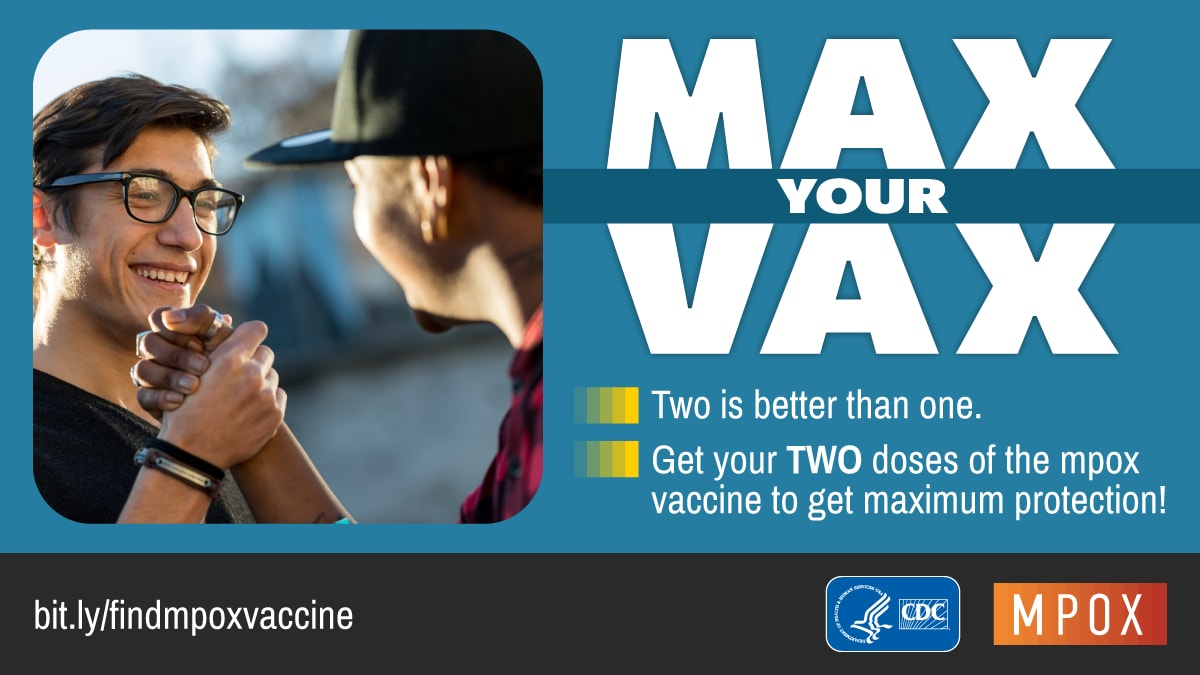
Get the Latest on Mpox Right on Your Website!
The mpox outbreak is better, but not over. Vaccination can help limit the spread of the virus. A new way to share reliable and accurate mpox information is by embedding the CDC mpox microsite onto your website. The mpox microsite is a collection of syndicated content that can seamlessly become part of your website's content. The mpox microsite includes the most popular or frequently visited pages. In addition, consider using CDC's latest social media graphics and messages to share information about mpox with your audiences. The messages highlight how important it is to get both doses of the vaccine for maximum protection. For more information about microsites, social media messages, and images please go to CDC's Public Health Media Library.
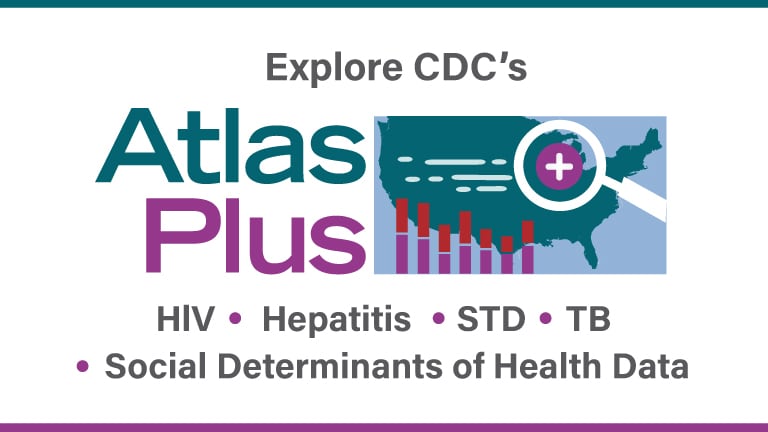
AtlasPlus updates
NCHHSTP AtlasPlus gives you quick access to nearly 20 years of CDC data on HIV, viral hepatitis, STDs, and TB at the national, regional, state, metropolitan statistical area (MSA), and county levels. Users can also view social and economic data in conjunction with HIV, viral hepatitis, STD, and TB infections and indicators. Check out "What's New" on AtlasPlus. Several improvements and data updates have been made since the start of 2023:
- Added 2021 STD diagnosis data at the national, state and county levels.
- Updated 12 National HIV Surveillance System (NHSS) HIV indicators for data through 2021 based on HIV diagnoses reported to CDC through December 2022.
- Added new MSA data for 6 NHSS HIV indicators for 2019–2021.
- Updated preliminary 2022 and 2023 data on HIV diagnoses and 2022 data on linkage to HIV medical care, both at the national, state, regional, and county levels. Data for 2022 and 2023 are considered preliminary (subject to 12-month reporting delay) and include HIV diagnoses reported to CDC through March 2023 and linkage to HIV medical care reported to CDC through December 2022.
- Updated PrEP coverage data based on prescriptions reported through December 2022 at the national, state, and county levels.
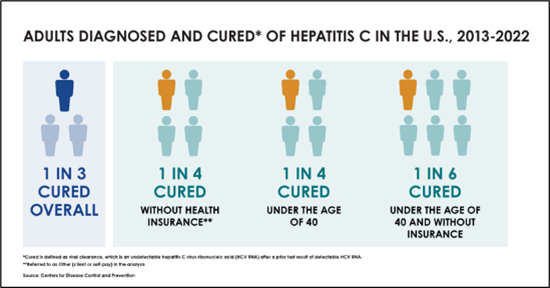
New report on Hepatitis C and the investment needed for a transformative national response
Nearly a decade after safe and effective treatments were approved, cures for hepatitis C fail to reach most people in the Unites States who need them. When untreated, hepatitis C can lead to liver cancer, liver failure, and death. A new CDC report shows that for people diagnosed with hepatitis C between 2013-2021:
- Only 1 in 3 have been cured
- Only 1 in 4 without insurance have been cured
- Only 1 in 4 adults under 40 have been cured
Major barriers to treatment include cost of treatment, restrictive treatment coverage policies, and challenges of diagnosing hepatitis C. The White House has requested $11 billion for hepatitis C elimination – if approved, these investments will address treatment barriers, save billions in healthcare spending, and save thousands of lives. A transformative national response with a well-funded public health effort is vital to reaching more than 2 million people with hepatitis and expanding accessible services to prevent new infections. and expanding accessible services to prevent new infections. Read more about my thoughts on the CDC's Hepatitis C report in the Dear Colleague Letter and Media Release.
Get the new Hepatitis C treatment finder
Rates of hepatitis C in the United States continue to rise, while treatment rates remain far too low. To assist those seeking hepatitis C treatment, CDC developed the Hepatitis C Treatment Locator Widget, which helps users find nearby treatment providers. Public health partners can add this widget to their website, and health organizations and providers that treat hepatitis C can add their clinic to the database of providers. Hepatitis C is curable. This locator tool is a significant step in helping patients locate lifesaving treatment.
STI Federal Implementation Plan, 2021-2025
On June 8, after a collaboration with CDC's STD Program and many other partners, the U.S. Department of Health and Human Services (HHS) released the Sexually Transmitted Infections (STI) Federal Implementation Plan, 2021-2025. The Implementation Plan complements the STI National Strategic Plan. Through these plans, HHS and its prevention partners hope to reverse the dramatic rise in STIs in the United States.
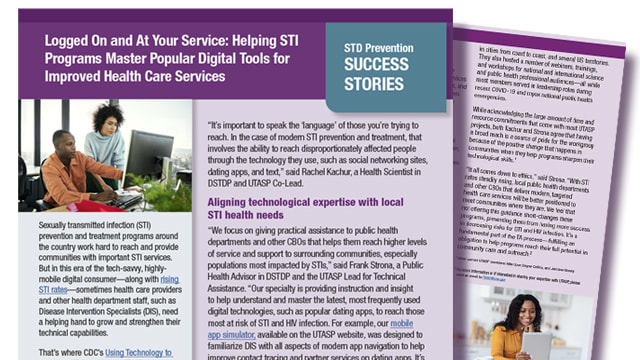
UTASP workgroup helps partners improve their digital reach
The latest STI Prevention Success Story, Logged On and At Your Service, highlights the Using Technology to Advance STI Prevention (UTASP) workgroup. The UTASP workgroup provides health departments and other sexual health programs with the technical assistance needed to communicate effectively with consumers in popular digital spaces like dating apps. Through their efforts, the workgroup is helping communities improve STI treatment and prevention outcomes. To learn more, visit STD Prevention Success Stories!
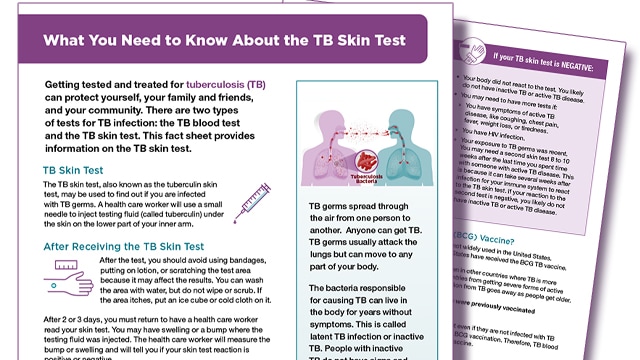
Updated CDC TB skin test fact sheet
Check out CDC's Tuberculosis Elimination program's updated "What You Need to Know About TB Skin Test" fact sheet. Healthcare providers and TB programs can use this fact sheet to educate people about TB skin testing and the importance of getting tested for TB disease. To download visit the CDC website.
Current events
Maine declared an end to hepatitis A outbreak
Since 2016, 37 states have reported hepatitis A outbreaks associated with person-to-person transmission. As of June 2023, Maine has declared an end to their outbreak, bringing the total number of states that have declared ends to their outbreaks to 33, with 4 states reporting ongoing outbreaks. CDC continues to provide technical assistance to jurisdictions requesting it.
EHE website launched!
An updated and streamlined website for the Ending the HIV Epidemic in the U.S. (EHE) initiative was recently launched. Designed to reach policymakers, grantees, and current and future partners, the concept for the updated website was developed collaboratively with both internal and external partners involved in the EHE initiative. The new organization of the EHE website includes sections about EHE, information on EHE progress and success stories, and resources for partners and grantees. Be sure to see the updated website.
To get the latest news and announcements from our Center, check out the NCHHSTP newsroom.
Observances and events
National HIV/AIDS and Aging Awareness Day is September 18
A Case Study: Social Media at CDC a Health Literacy Training Webinar is September 22. Register today.
